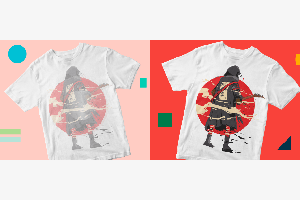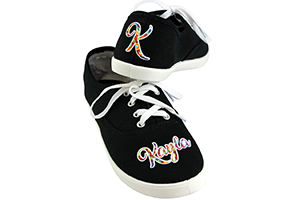October 12, 2016
Sublimation decoration of T-shirts, jerseys and other apparel takes 10 minutes to learn and a lifetime to master. The equipment and products are always changing, so whether you have been sublimating for 20 years or two days, there are always new lessons to learn.
As a sublimation specialist, my job is to make those lessons easier for decorators. I am lucky to be part of a team that, through years of trial and error, has accumulated a bag of tricks for successful sublimation. Here are 10 tips passed down to me — and now to you — to help you better perform this process.
1. Prolong transfer printer life
To ensure a long printer life span, leave it on at all times. It is a common misconception that this will waste more ink when, in fact, the opposite is true. Leaving the printer on will allow it to perform short maintenance cycles to keep ink flowing and prevent clogged print heads. If you shut the printer down every night, it will do a more extensive, thorough cleaning the next time you turn it on, using a larger amount of ink.
2. Use sublimation ink or lose it
A printer’s sublimation inks have a shelf life. Leaving them in the printer too long will cause issues such as color shifting, head clogs and banding. Many people agree that you can print past the “use-by” date without any issues, but a good rule of thumb is to use the cartridges within six months of installing them. It is not recommended to print past six months of the use-by date. Marking the cartridges with the date on which you installed them is a good way to keep track of their life span.
3. Invest in a good sublimation press
If properly maintained, a quality heat press can last 10 or more years. Look for an industrial-grade press that recovers quickly between pressings and also has a digital display so you can see temperatures rise and fall. Investing in a digital pyrometer, a device that reads the heat of your press, can ensure the accuracy of its temperature reading.
4. Know your sublimation substrate
Certain substrates require additional accessories or a specific press type for successful sublimation. Consult with your distributor about product instructions and specs to ensure you have the required equipment.
5. Always have extras blanks garments
When sublimating, always have extra pieces, especially when working with a new product. Mistakes will be made, whether human or mechanical errors, that will affect your production process. Therefore, it’s always good to have backups.
6. Use everyday items to successfully sublimate
You can use some common household items to successfully sublimate. Paper towels without a textured pattern or print can be placed underneath hard substrates to help evenly distribute pressure and catch any ink blowout. Substituting butcher paper — also known as end-roll paper — for Teflon sheets will keep double-sided items, such as apparel, clean during production.
Use a lint roller on apparel to remove any stray fibers remaining from the production process that can cause permanent blue dots on the finished product. Finally, lighter fluid can be used to remove fingerprints and adhesive residue from hard substrates, resulting in a clean finish.
7. Choose the best adhesive
Use heat tape on hard substrates and repositionable spray on apparel. However, the latter comes in handy on double-sided, hard substrates when sublimating both sides simultaneously.
8. Hone your decorated apparel design skills
For some, the hardest part of sublimation is using design software, so take time to learn these programs. Just knowing the basic navigation tools can save you time and headaches. Start small and build on your skill set.
9. Take advantage of sublimation resources
Check with your distributor for available resources such as how-to videos, webinars, product templates and specs, design software tutorials and technical support.
10. Set the right price for your decorated apparel
There is no special formula for pricing sublimated goods. Start by figuring out your production costs. Always remember that a personalized item’s value depends on what it’s worth to the customer.
Colin VanLint joined JDS Industries in fall 2015, and currently works as a sublimation specialist. This article was updated on April 18, 2023.
April 12, 2023 | Sublimation
As you work toward becoming an experienced dye-sublimation apparel, general merch or customized promotional items decorator, you may come across one or more obstacles, like your transfers coming out blurry, dull or faded.
FULL STORY
June 1, 2022 | Sublimation
How many times have you wished that you could sublimate a product that wasn’t polymer-based or polymer-coated.
FULL STORY
October 8, 2021 | Sublimation
I think the philosophy of lagniappe should be taught at every school and practiced by every business. A French word meaning “unexpected extra gift,” lagniappe often is used in Louisiana. In fact, sublimation decoration is a fantastic example of this.
FULL STORY




